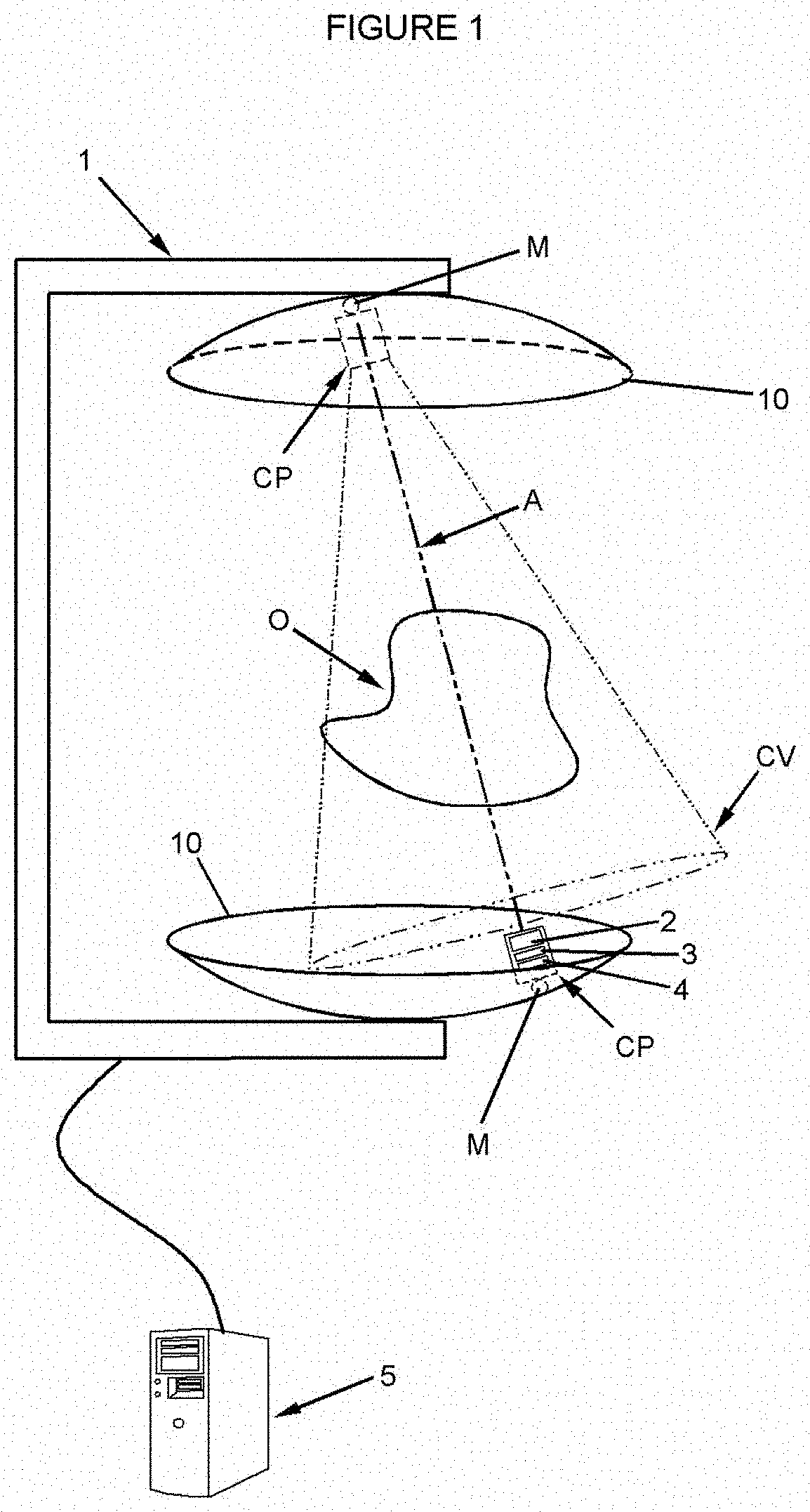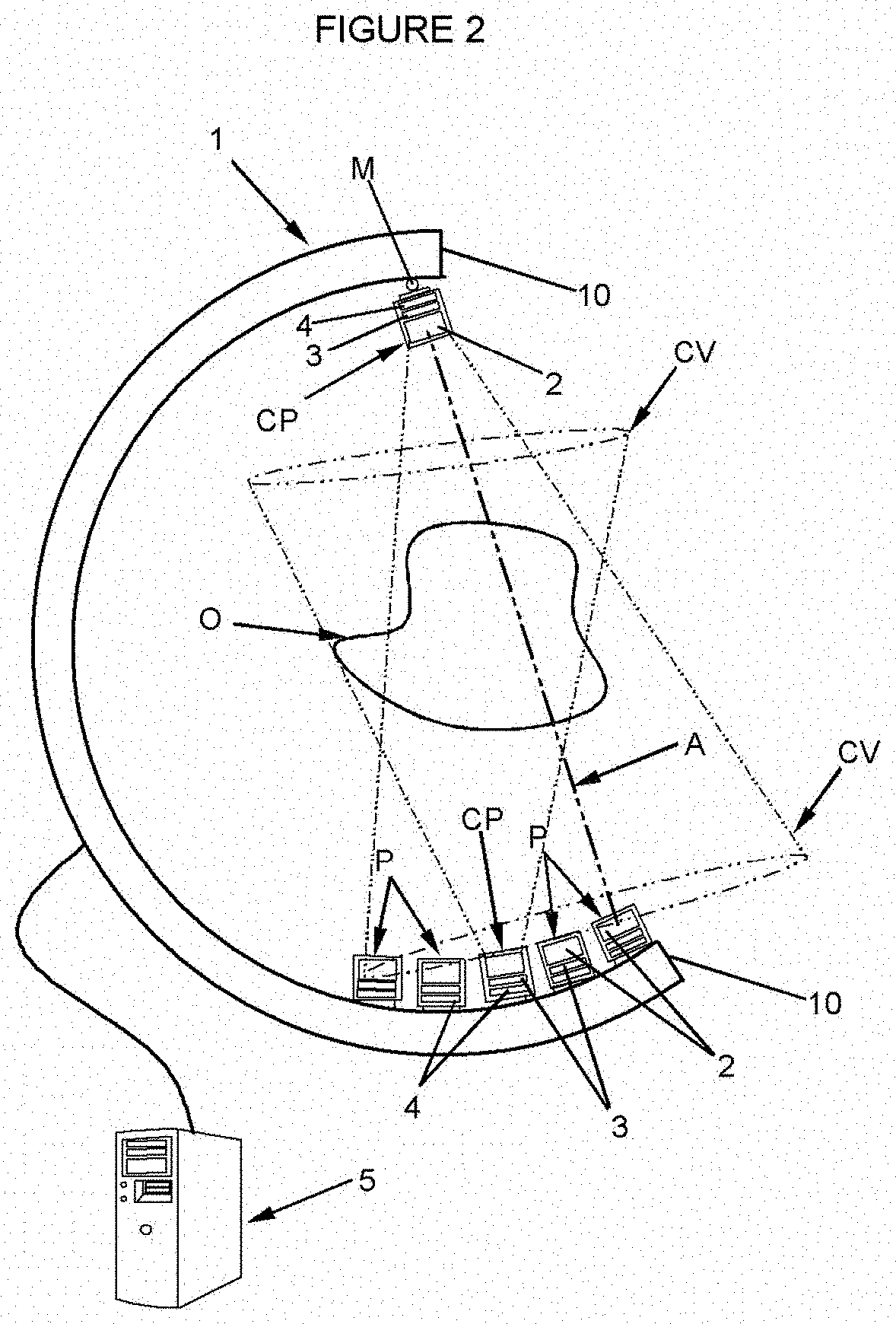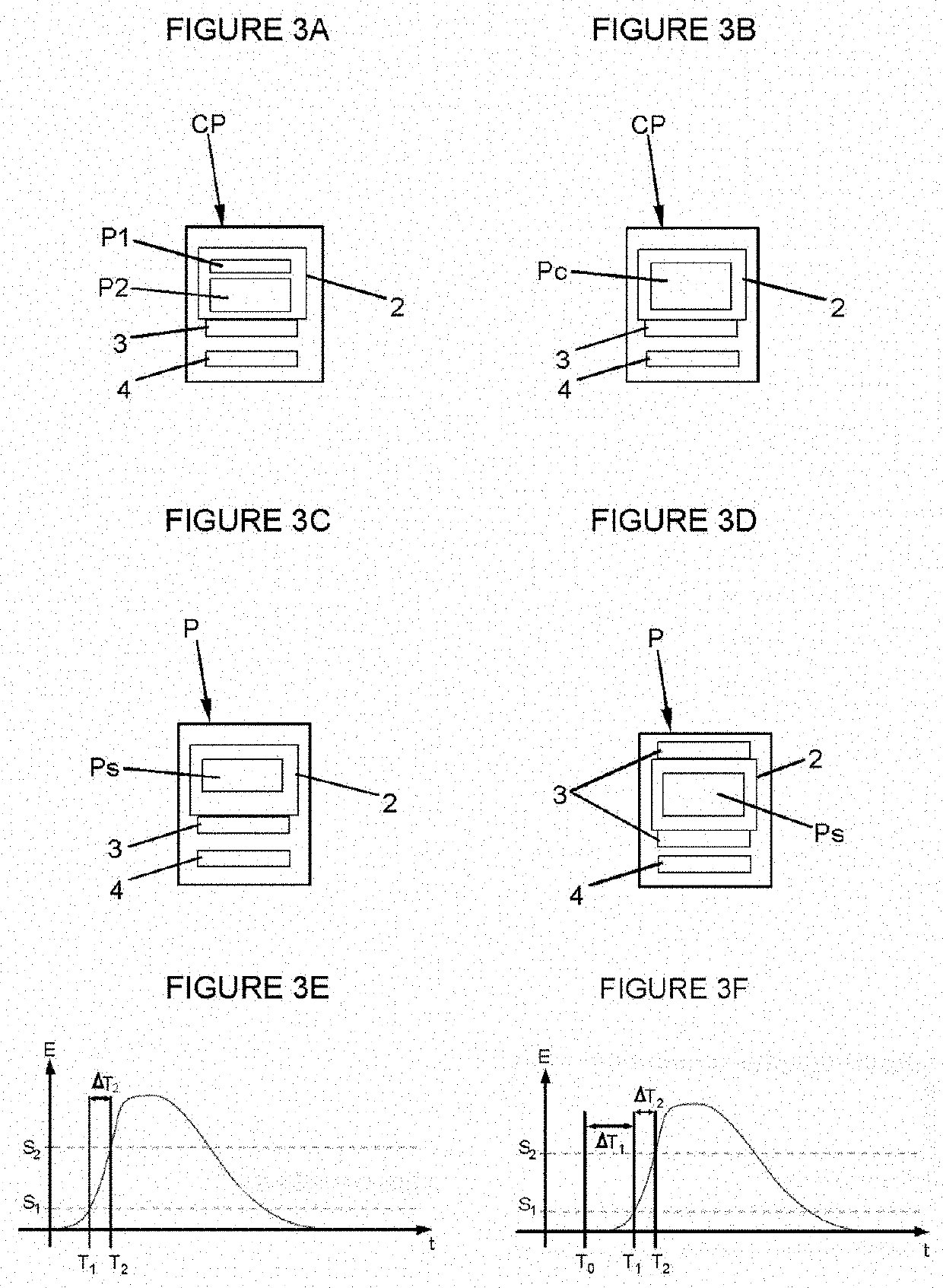System and method for imaging by gamma radiation detection
a gamma radiation and detection system technology, applied in the field of imaging, can solve the problems of large part of the photons not being detected correctly, short life of the radio-element used for the pet, and difficult to envisage their use in a surgical context, so as to improve the accuracy of the measurement of the depth of the event and eliminate the noise of signals
- Summary
- Abstract
- Description
- Claims
- Application Information
AI Technical Summary
Benefits of technology
Problems solved by technology
Method used
Image
Examples
Embodiment Construction
[0041]The present invention relates to a system and a method for imaging by gamma radiation detection comprising at least one processing unit (5) analyzing at least one signal provided by at least one set of detection modules (CP, P) mounted on a frame (1) and including, on the one hand, at least one module of Compton camera type having a field of view (CV) directed towards a volume delimited by the frame and, on the other hand, at least one pair of coincidence detection PET modules, diametrically opposite to each other on said frame and defining an imaging axis (A), said processing unit (5) analyzing the signal derived from said Compton-type module to determine the intersection of said imaging axis (A) with said field of view (CV) and determine the optimal orientations and / or locations of the various detection modules (CP, P) on the frame so that the imaging axis (A) passes through the source of said gamma radiation in said object (O) to be imaged. Thus, it is understood that there...
PUM
 Login to View More
Login to View More Abstract
Description
Claims
Application Information
 Login to View More
Login to View More - R&D
- Intellectual Property
- Life Sciences
- Materials
- Tech Scout
- Unparalleled Data Quality
- Higher Quality Content
- 60% Fewer Hallucinations
Browse by: Latest US Patents, China's latest patents, Technical Efficacy Thesaurus, Application Domain, Technology Topic, Popular Technical Reports.
© 2025 PatSnap. All rights reserved.Legal|Privacy policy|Modern Slavery Act Transparency Statement|Sitemap|About US| Contact US: help@patsnap.com



